
Oops! Something went wrong while submitting the form.

You have probably heard that the YouTube search engine is the 2nd largest search engine in the world. Besides, YouTube is owned by Google; therefore, it makes sense. So no one really questions whether that is actually true or not... right? But...do you really think the YouTube search engine is the 2nd largest search engine in the world? Are you sure?
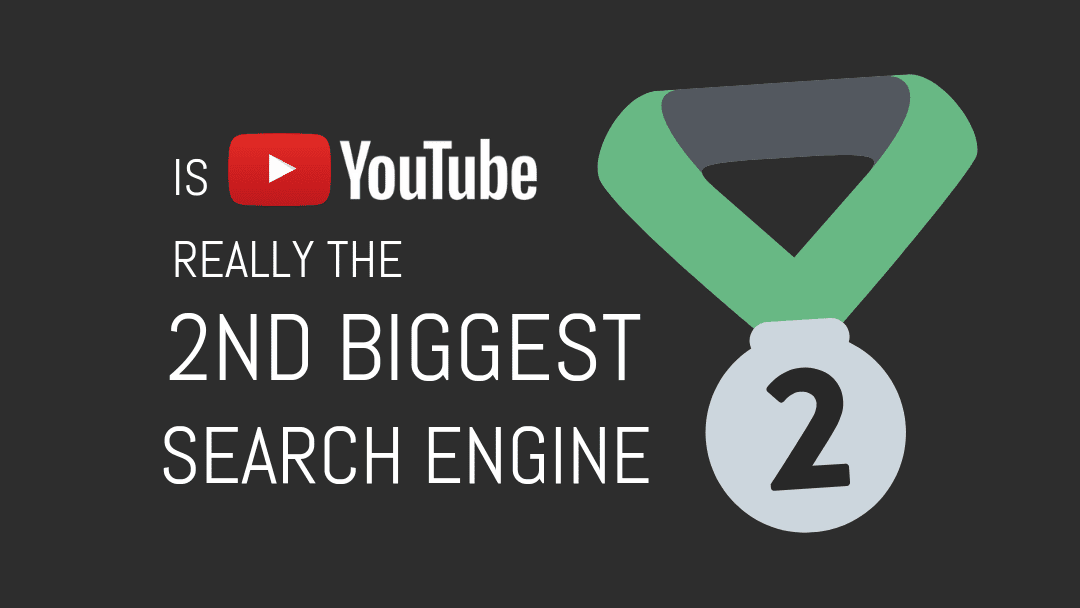
Let's dig a little deeper to learn the answer. We will also uncover some of the biggest YouTube Search myths, where those myths came from, YouTube's real search engine position, and why any of this matters — really matters!
So — how big is YouTube and is YouTube really the 2nd largest search engine in the world?Nope! But...Of course, there is a "but" in this answer. So let's get into the nitty-gritty.Google itself markets its daughter company YouTube as the 2nd largest search engine in the world. And, a number of Google reps like to talk about this. However, that is not entirely true because there are several underlying ranking factors that are mostly ignored by marketers and others that affect this statistic. So let's talk about those ranking factors and how this YouTube search engine myth started.
The myth about YouTube being the second largest search engine in the world started more than 10 years ago: in 2008!Back then ComScore analyzed the US search engine market and found out that YouTube achieves a greater level of search traffic than Yahoo. So, if you were to consider YouTube’s integrated search a regular search engine, YouTube would rank 2nd on the podium.Aha. That’s quite a big “if“, isn’t it?!The more recent articles on "YouTube as a search engine" don't refer to ComScore data anymore but to Alexa.com. Even Google's official blog does that.However, and here is where the confusion comes in, Alexa's traffic ranks are for domains only. Which means they do not measure search requests.
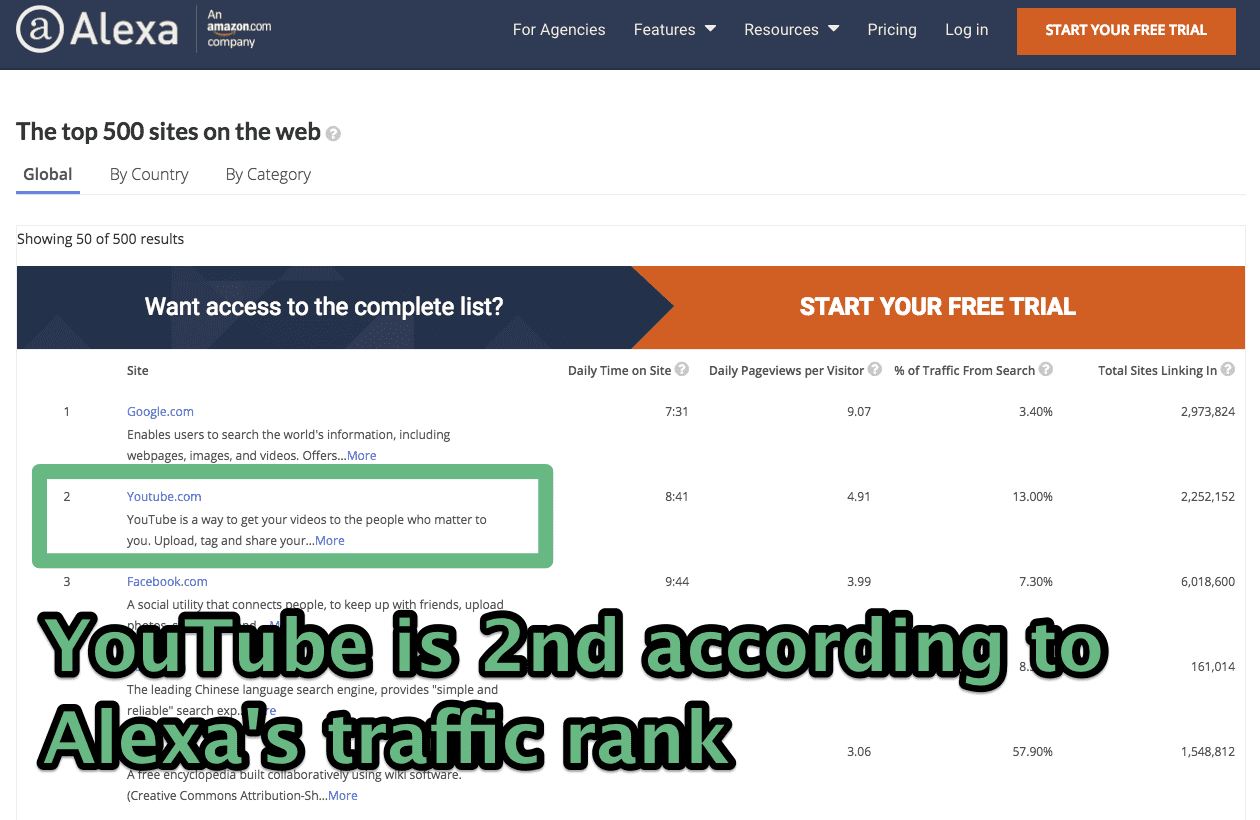
Google representatives obviously argue that only because there is a search field on YouTube and YouTube is the 2nd most popular website in the world, it's seen as the 2nd most popular search engine.This is a bit... wrong. Why?Because if you want to evaluate the biggest search engine, you have to look at the actual web searches taking place — not the website traffic.
So where to look at? Rand Fishkin, the founder of MOZ and Sparktoro, recently consolidated two data sources:1. Jumpshot. This is a data provider that analyzes clickstreams from 100 million devices worldwide and whose users have downloaded free security software from partner Avast. The devices include smartphones, laptops, and tablets.2. Statcounter. This is a web analytics service. The Statcounters tracking code is installed on more than two million sites globally. For search engine stats, they analyze every page view referred by a search engine.And this what he found out:
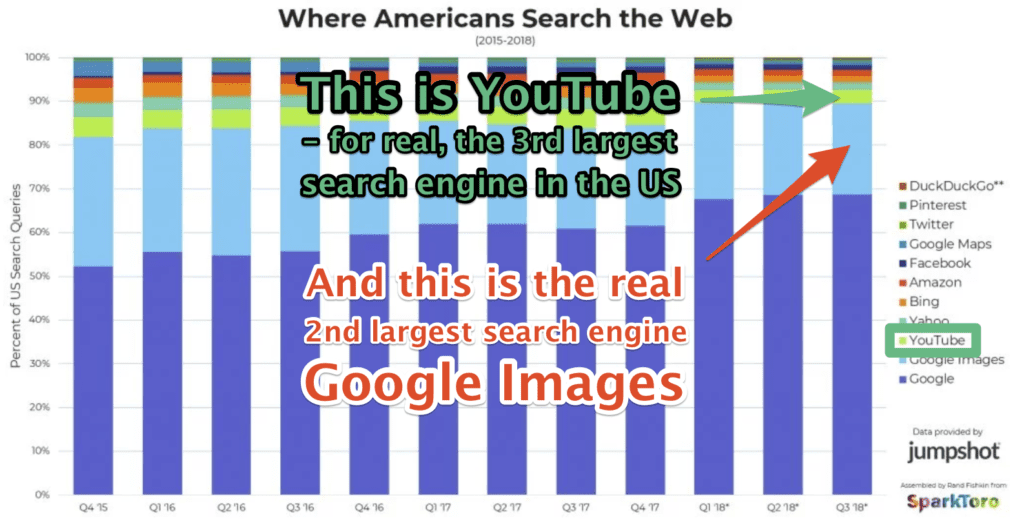
Following Rand's blog post the Google ecosystem equals about 90% of all searches. This ecosystem includes Google itself, Google Images, YouTube and Maps.The data shows that Google makes up around 68%. Another 20% go to Google Images followed by YouTube with another 3% approximately.Effectively this means that Google Image Search is the 2nd largest search engine. And YouTube is 3rd in reality.You can easily double-check this when looking at the data from Statcounter. They don't list separate Google services but list all of them under the "Google" umbrella brand.
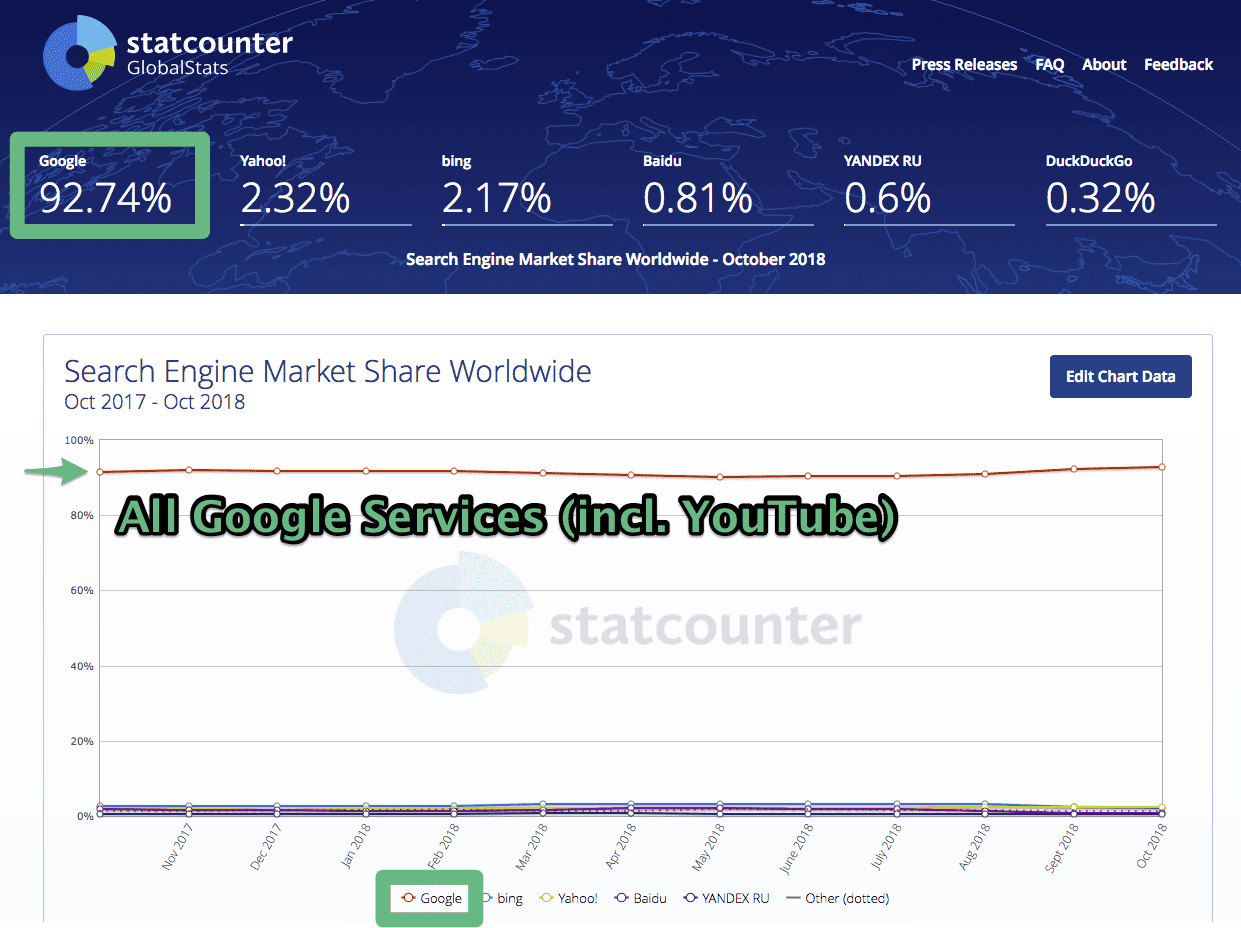
NetMarketShare gives Chinese Baidu a bit higher global market share of about 10%. Yet, proportionally Google Image Search would come second place with NetMarketShare's data as well. When you just rank the services by domain Baidu is the silver medallist, and YouTube picks up bronze.It's all a bit complicated.
Of course, you can argue if YouTube and Google or Bing have similar significance in terms of a business’s marketing and visibility on the web.But even if YouTube is only 3rd and not a search engine in its perfectly technically accurate description - YouTube is HUGE!
"It has more search volume than Bing or Yahoo, more than twice Amazon's, and three times Facebook's." Rand Fishkin
And YouTube is even huger when looking at millennials, kids or teenagers.A recent Austrian survey among teenagers stated that YouTube is their No.1 search engine. It's even more popular than Google among this age group.How can this be true?
Teenagers look for music on YouTube for many hours out of the day. They just use YouTube as a streaming platform for music.According to the IFPI Global Music Report 2018, YouTube is the dominant streaming platform in the worldwide music business. They state that an estimated 46% of all music streaming listening time was done on YouTube.
"More music is played on YouTube than on Spotify, Apple Music and every other audio streaming platform combined." IFPI International Federation of the Phonographic Industry
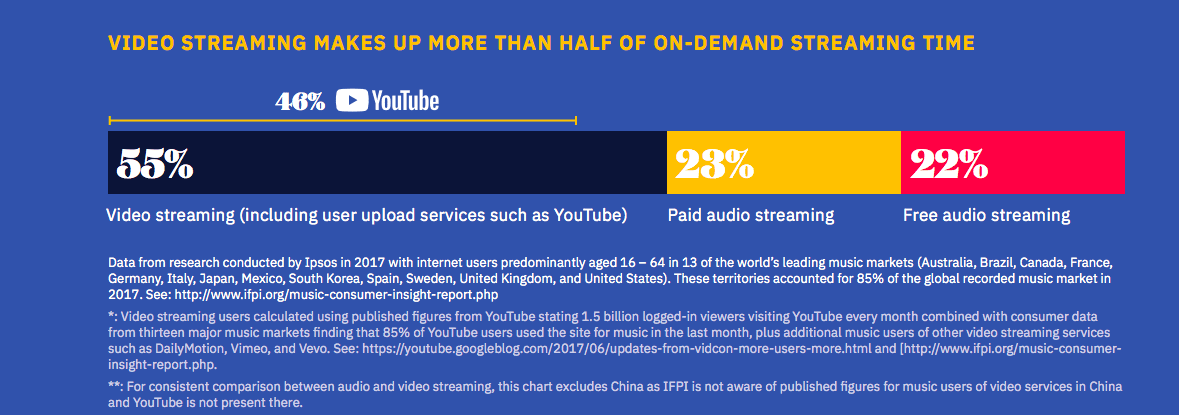
Aside from music, teenagers watch lots of gaming, entertainment, and beauty videos. This is where YouTube is really strong among this demographic.According to Tubular Labs, which is kind of the Nielsen of online videos, Entertainment is the biggest genre in terms of views on YouTube.Entertainment thereby includes content like musical entertainment as well as vlogger videos and popular television shows.
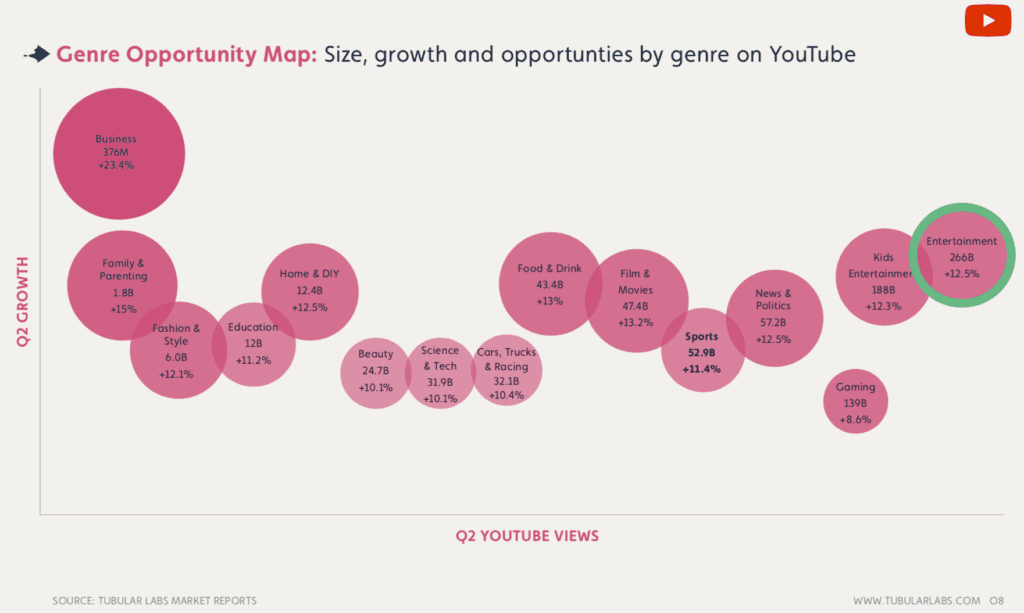
And to drill down even further, Music and Kids are the biggest growth categories when looking at total YouTube views.So when looking at these numbers, you get an idea of what these teenager search requests on YouTube actually are about. Generally, most often the teens are probably looking for songs, trailers, some TV show, or if the next vlog episode is already available.
No — not at all. In fact, with video snippets in Google, hosting videos on YouTube is becoming more relevant than ever. Both for content marketing AND as a hosting service. As a video hosting service for websites, YouTube has a massively dominant position as can be seen here on Datanyze.And it's growing stronger than the other video platforms in this segment. At the time of writing this post, 3 out of 4 websites in the world have YouTube embedded.
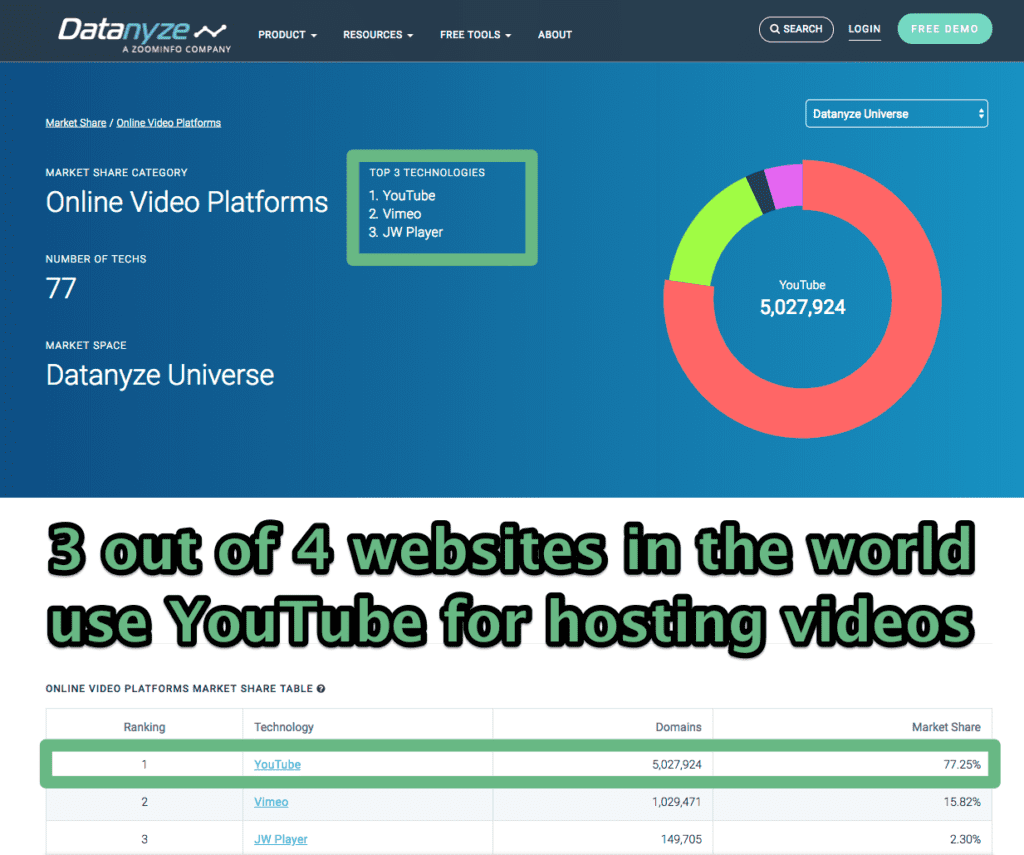
When you are currently searching on Google you might come across videos in search results. Google features three different ways how to display videos - or YouTube videos in particular:
1. Organic Listing with Video Thumbnails The videos appear in the organic SERP listings and can get displayed using their corresponding thumbnail. However, this display format is disappearing more and more.
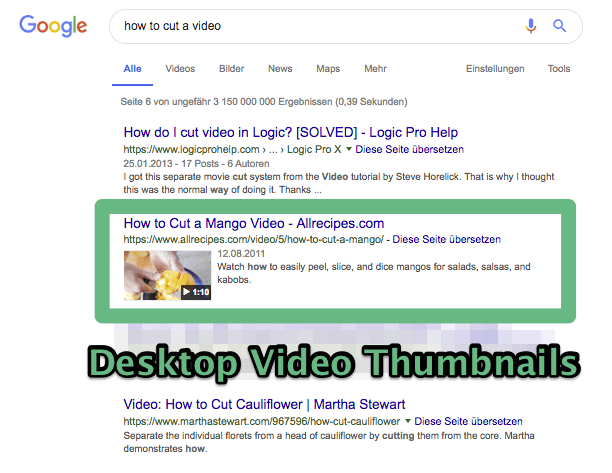
2. Video Carousel BoxThe first display format right now gets gradually replaced by a carousel-formatted video box. Google's video carousel box gives searchers a way to click and toggle through three or more videos by clicking on the right arrow on the last video on the right of the box.
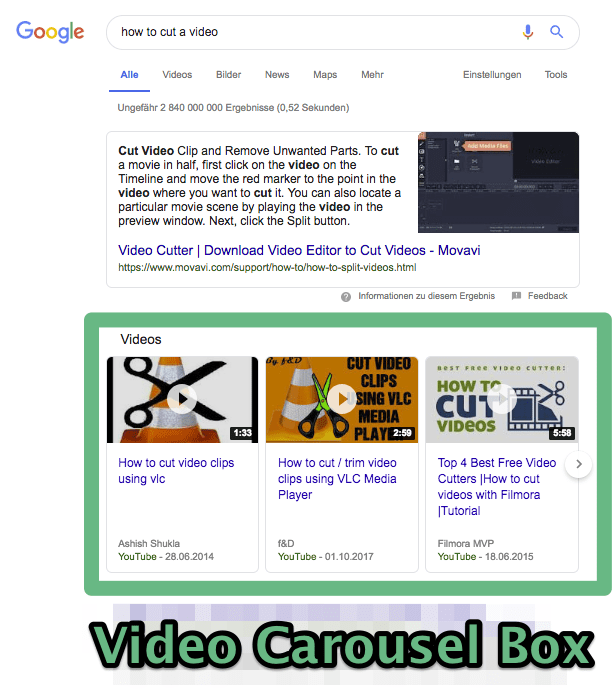
3. Google Answer Box with VideoThis is the display format Google shows you when its machine learning algorithm is pretty sure about the answer to your question AND has a good video result at hand. The Google's Answer Box gets displayed at or near the top of any given results page - this makes it the most prevalent option.To get the answer to your question you don't even have to leave the Google page, you just have to click the Play button.
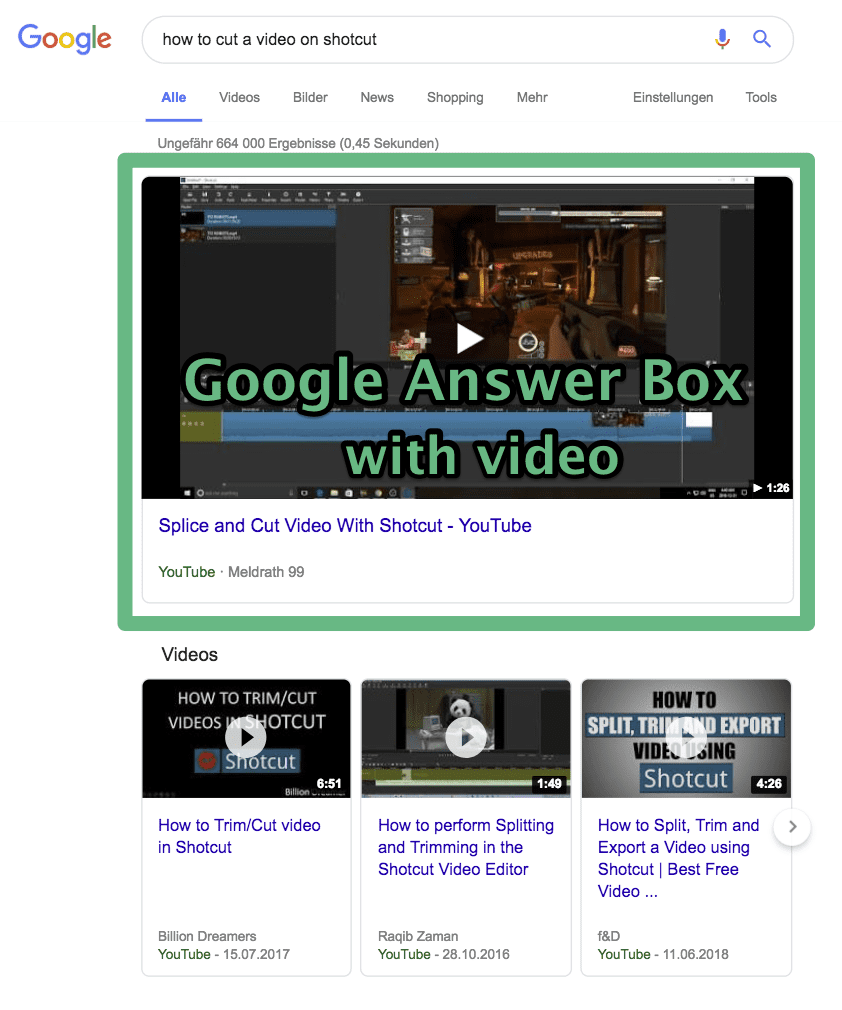
And the Google Answer Boxes not only take into account the videos from YouTube, but they also allow for the text from those video descriptions to be used in the answer boxes. That is why it's so important that the text you use in your YouTube video descriptions is properly structured for the best possible YouTube SEO.
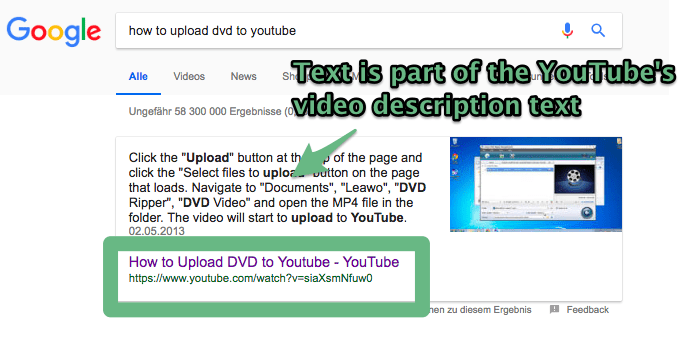
For videos, there are only rumors yet. The factors that appear to have the most impact are
Interestingly enough, for text content, you do not have to rank first to have your content featured in an Answer Box. But, you do have to structure it properly. No one knows the algorithm Google uses for the content it places in its answer boxes; however, there are a few things that appear to be factors: such as having a mobile-friendly website, content that ranks in the first 20 or so results, content written as a question that is frequently searched for, short—to the point answers to those questions, structured content using the H1 tag and steps for things like "how-to" questions, and good user metrics (bounce rate, time on site, number of page visits, etc.).So we know that videos and YouTube, in particular, have a strong presence in search results as of today. But what about tomorrow?
Tomorrow it's getting even better. Out of the listed display formats, the Answer Boxes and Carousel Boxes are the most important. Google is currently testing these display formats on desktop and mobile to integrate them in its newest search product: The Google Home Hub.The Home Hub is the newest Google product release and this is the stuff that dreams are made of, especially when it comes to YouTube videos.
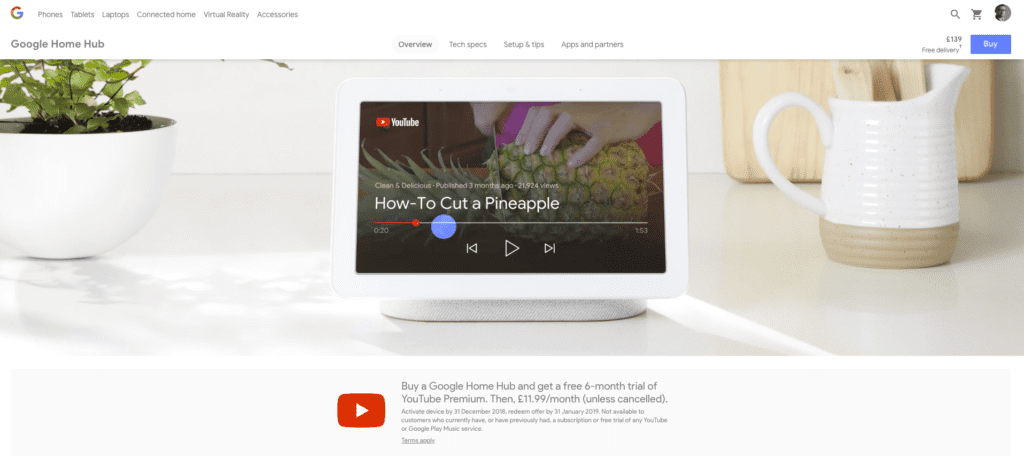
It's a smart display hub system featuring a seven-inch screen, a speaker, and a smart artificial intelligence program (Google's Assistant) that all work together using an interface that combines sight, speech, and touch controls.But how does the Google Home Hub help with your YouTube videos?The Google Home Hub is geared to provide its users with YouTube video results versus the featured snippet results you would get when using the Google Home option which doesn't have a display but rather speaks the website content to you.
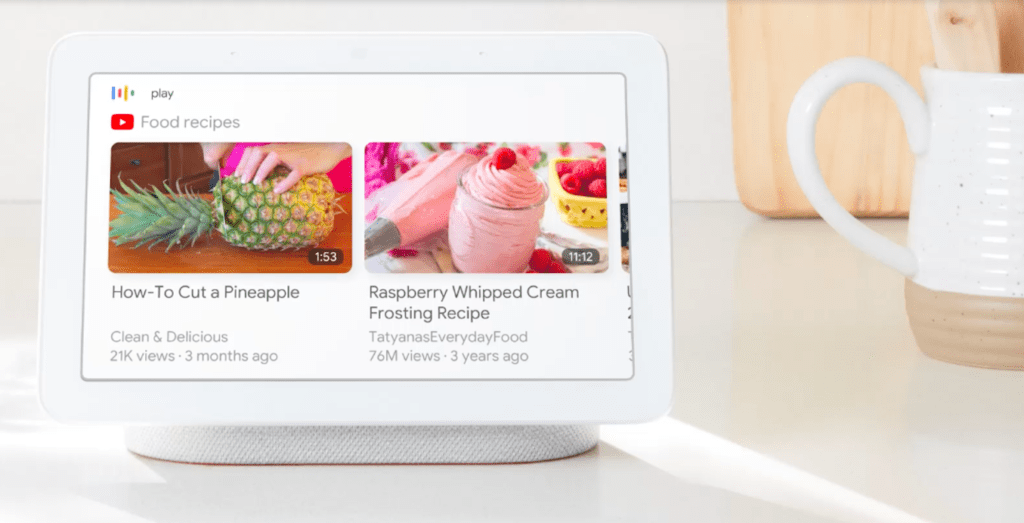
For example, if a user enters a query on "how to cut a pineapple" or "how to change the oil in your car", the Google Home Hub will show you YouTube video answer options from which you can choose. Then you can hear and watch the YouTube video result of your choice on the display.And it's more than likely that the video snippets that get displayed are powered by Google's own video hosting service!
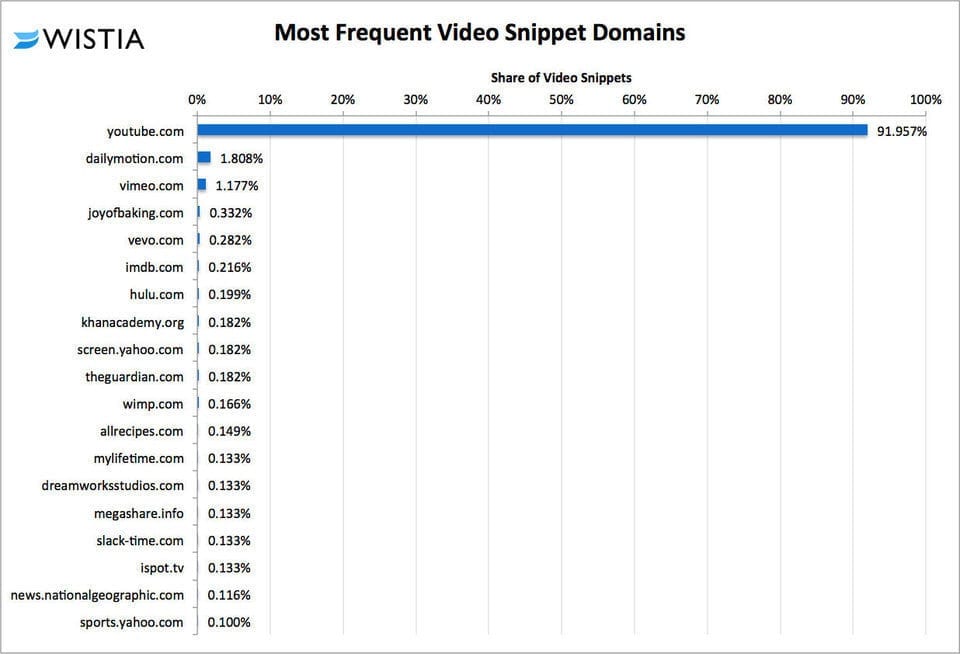
YouTube SEO helps with YouTube video ranking, but even more importantly with its big mama Google. When looking at the numbers shown above you see that this is where search originates after all.With Google being the largest search engine and with The Google Home Hub taking over modern living rooms, if you are not carefully studying, crafting, and strategically implementing proper YouTube SEO, you are certainly leaving money on the table.Why? Because with all the competition out there, you have to use every available ranking method if you want your videos to rank and be seen.The best way to go about doing that is to
A YouTube SEO tool will provide you with analysis and analytics for your videos, check your ranking factors, provide you with an SEO action plan, a YouTube tag generator, professional thumbnails, and more. So why wouldn't you use a YouTube SEO tool? Good question!The addition of the Google Home Hub and the fact that it overwhelmingly provides YouTube video results in its searches is more than enough reason to start spending more time creating YouTube videos for your content as part of your ongoing SEO strategy.
Here is a quick summary of what we have discussed.
Google and its ever-changing landscape and trends can be difficult, if not impossible, to keep up with. However, jumping on and using the most current products and services Google rolls out is the best way to stay current and ahead of the game. And that includes making sure you thoroughly study every possible way to use what they have to your advantage. For example, choreographing your YouTube video SEO, including YouTube hashtags and YouTube descriptions in a way that makes your content stand out. Doing so will better your content's chances of landing in some Google Answer Boxes or being selected as part of a Google Home Hub user query. And who doesn't want that!
“It might be time to start focusing more on creating YouTube videos for your content with the release of the Google Home Hub."
SearchEngineLand.com
.png)